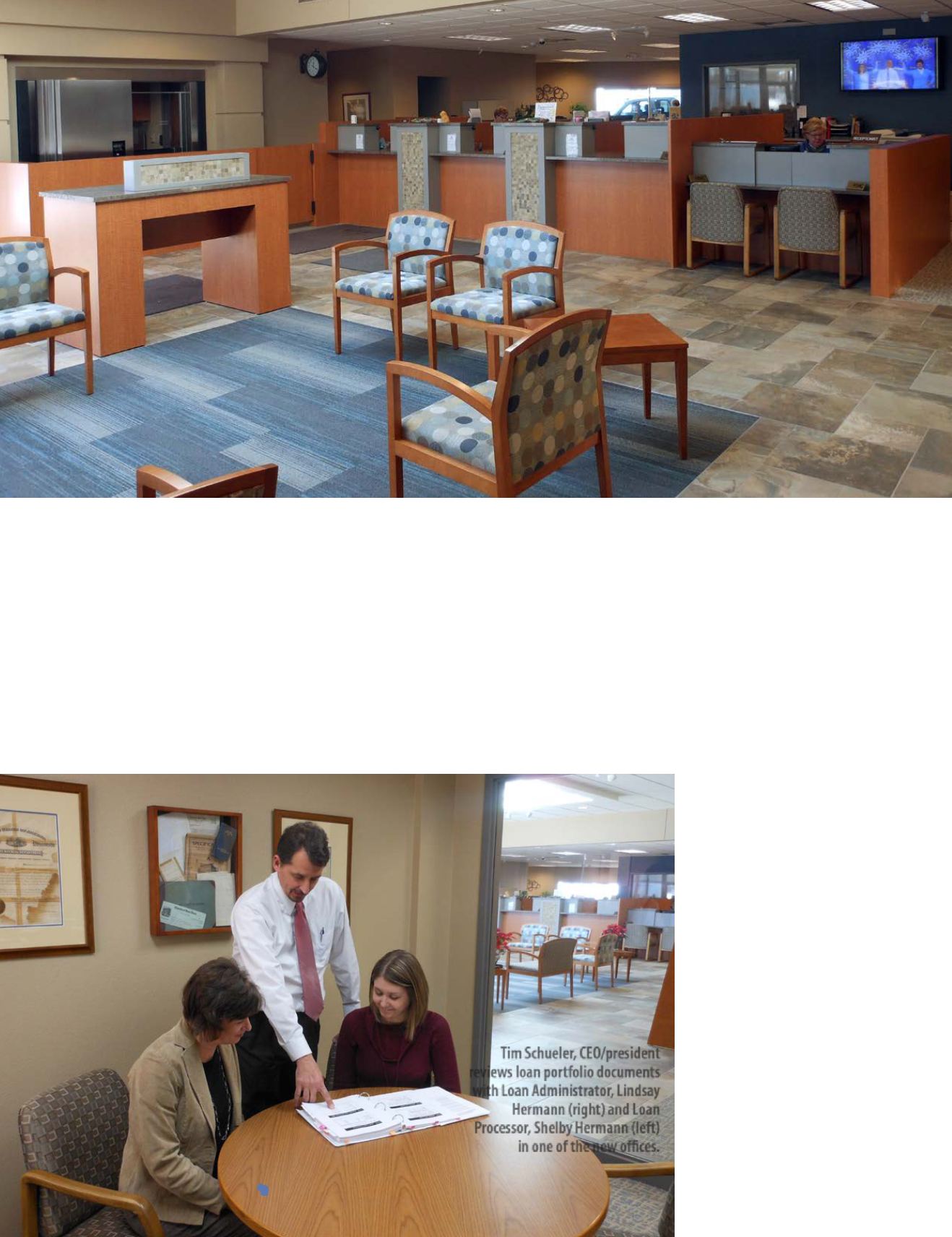
Interior Remodel Results in More Efficient Use of Space
Mary Lou Santovec
W
ouldn’t it be wonderful if when
business needs change, your
workplace environment could change
with it? In their recent remodel,
Cleveland State Bank did just that.
“They had a facility that really had
been involved in serving a different
kind of need,” said Jim Fryk, chief
operating officer with La Macchia
Group, the Milwaukee-based firm that
handled the bank’s remodel.
The slightly over 9,000-square-foot
building was constructed in 1988 with
space for check processing, printing,
and binding, none of which the bank
was currently doing. “The loan admin-
istration area of the bank was spilling
out into our lobby area and we had
concerns with disruption of staff and
potential privacy issues,” said Timothy
Schueler, president and CEO of the
bank explaining the decision behind
the remodel.
The existing combination of
cramped quarters and empty open
spaces was reconfigured in
a three-step process—with
the bank remaining open
all the while. “Based upon
the bank’s advances over the
25 years, 30 percent of the
bank’s interior was devoted
to storage,” said Schueler.
“With the technology
advances over the 25 years,
we were able to more fully
utilize this square footage
to house the growing staff
in the areas of loan admin-
istration, compliance, and
employee training areas.”
The reconfiguration
allowed staff to be grouped
by department, not accord-
ing to which offices might
be open at any given time.
Customer service employees
Tim Schueler, CEO/president
reviews loan portfolio documents
with Loan Administrator, Lindsay
Hermann (right) and Loan
Processor, Shelby Hermann (left)
in one of the new offices.
22
Wisconsin Community Banker
January/February 2014


